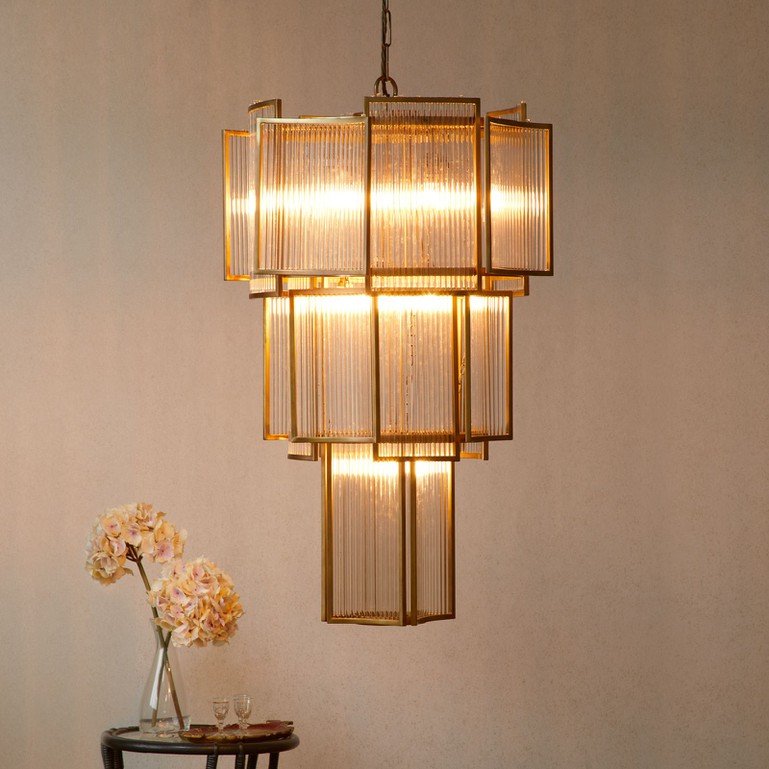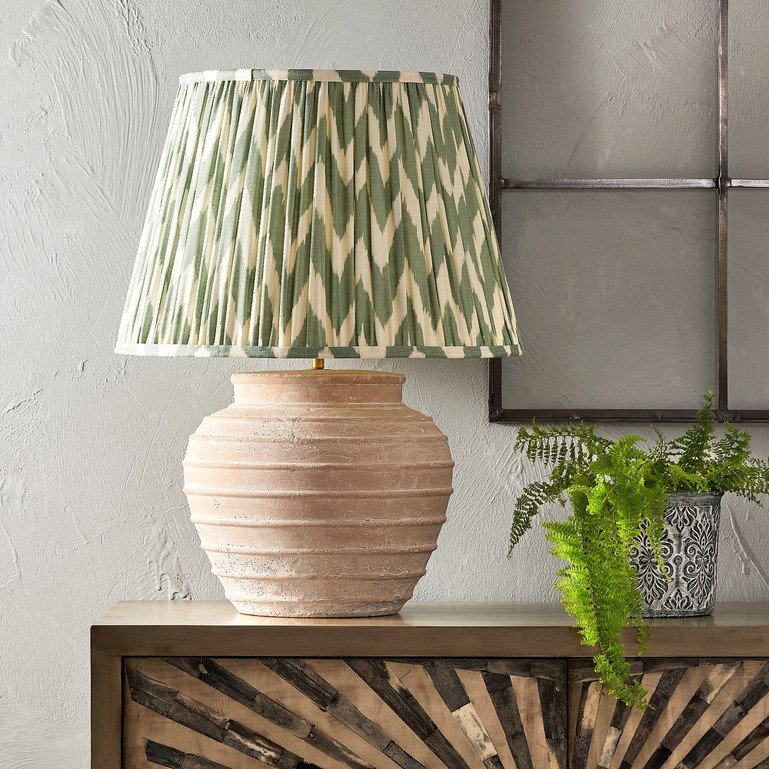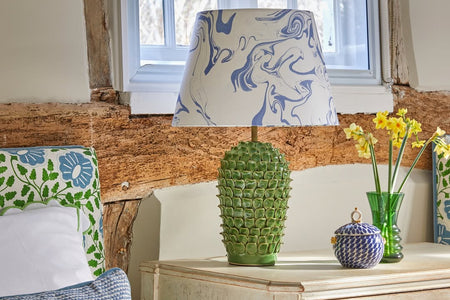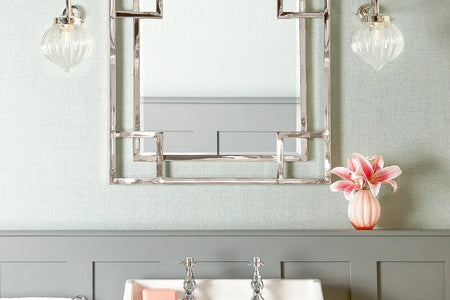
He’s been described as ‘the first interior design modernist’ and the father of the contemporary eclectic style. Here’s our guide to the remarkable architect and designer Sir John Soane – plus Pooky’s tips on how you can bring his aesthetic into your home (with the accent, naturally, on lighting)…
For architects and interior designers from around the world, Sir John Soane’s Museum in London is a place of pilgrimage. Interviewed in 2018, Sue Timney, then president of the British Interior Design Council says that it has served her as ‘an encyclopaedia of inspiration’ for over 30 years. We couldn’t agree more; in fact we featured the museum, which has been Sir John's home, as one of our 'Amazing Interiors', but we thought it was time to take a broader look at his life and career – and why, almost 200 years after his death, Sir John Soane still exerts such a powerful influence on interior designers.
The Breakfast Room. ©Sir John Soane's Museum, London. Photo : Derry Moore
The remarkable life of Sir John Soane
John Soan (the ‘e’ came later) was born in Berkshire in 1753 into a family of builders and bricklayers and rose to become one of the most celebrated architects of his age, a remarkable achievement at that time for a man of such modest beginnings. Through his older bricklayer brother, William, John met a local surveyor who arranged an introduction to architect and founder member of the Royal Academy, George Dance the Younger, to whom John was apprenticed at 15. By 1772, he was training and working with Henry Holland, where – coupled with his studies at the Royal Academy – he learned about every aspect of building design and construction. He won his first academy prize in the same year and the pattern was set…
Portrait of Sir John Soane, 1804 by William Owen
A travelling scholarship in 1778 enabled him to go on the Grand Tour, a must aspiring artists and architects in the 18th century. His journey took in the Palace of Versailles, Rome, Naples, Vicenza, Bologna and Florence, and Switzerland, Germany and Belgium on the way home. Not only was this tour hugely influential in terms of work but it also led to lifelong friendships and professional networks, and to an abiding appetite for travel.
The Arch of Titus, Rome, 1st century AD, a must-see for all upwardly-mobile young gentlemen on the Grand Tour (aquatint 1820)
By the mid-1780s, after some initial setbacks, Sir John Soane’s career had taken off and his services remained in demand for almost 50 years until his semi-retirement in 1832. His clients were drawn from the aristocracy and the great and the good of their day and, in addition to private commissions, he held many honorary and public appointments. He was Architect and Surveyor to the Bank of England for 45 years, Professor of Architecture at the Royal Academy for over 30 years, and a fellow of the Royal Society; he was knighted by William IV in 1821. Soane was an avid and wide-ranging collector; his passions included books, manuscripts, paintings, architectural drawings and models, antiquities, medieval and non-western objects, and sculpture. Soane died in 1837, having bequeathed the entire collection to the nation; it is housed in his former London home – now Sir John Soane’s museum.
18th century eclecticism – one small part of Sir Joan Soane’s vast collection. The Lobby to the Breakfast Room. © Sir John Soane's Museum, London. Photo: Gareth Gardner
Sir John Soane’s portfolio – the major works
Although we think of Soane primarily as an architect, his work also involved extensive interior design. He designed, remodelled and extended many fine private houses, including Wimpole Hall, Tyringham Hall and Aynhoe Park, as well as his own country retreat in Ealing, Pitzhanger Manor, and his London residence at Lincoln’s Inn Fields.
He was responsible for large-scale projects at many public buildings too; there were substantial works for the Bank of England, the Royal Hospital, Chelsea, and Freemasons’ Hall, and it is Soane whom we have to thank for Dulwich Picture Gallery, England’s first public art gallery. As you might expect from the inspiration he drew from the Grand Tour, Soane’s style is rooted in Classical design, with elements pared down to structural essentials. He preferred linear (think geometric) ornamentation and his designs often featured shallow domes and top lighting, such as Dulwich Picture Gallery’s long lanterns, and he was particularly adept at handling interior space.
Interior of Dulwich Picture Gallery. Photo: Ethan Doyle White
Why Sir John Soane’s design approach still influences today
So highly was Soane regarded that he continued to influence architects and designers for generations to come. Take the domes of England’s famous red telephone kiosks, designed by Sir Giles Gilbert Scott and first constructed in 1926; these were based on the dome of the family mausoleum, designed by Soane after the death of his wife in 1815. A century later and that influence has not waned. According to American architect Kevin Lichten: ‘All design folks think of Soane as the first modernist’. One of the main reasons for this, says Lichten, is the unique way that Soane drew on his knowledge as a collector and his skills as a curator to create spaces of ‘whimsy and delight.’ Modern, eclectic, and very World of Interiors…
The Library Dining Room © Sir John Soane's Museum, London. Photo: Gareth Gardner; Upper Drawing Room. Photo © Pitzhanger Manor & Gallery Trust. Credit: Angelo Hornak
Contemporary designers, such as Tim Gosling, admire Soane because he was a rule-breaker. In an interview for the Wall Street Journal, he cited Soane’s love of Regency yellow, which was taken to a revolutionary extreme in opting for monochrome yellow in the drawing room at Lincoln’s Inn Fields - walls, curtains and upholstery (not a fussy fringe in sight), right down to the yellow stained glass of the lanterns. (If you’re keen on recreating the look, just specify Soanian yellow...)
‘Soanian yellow’: The South Drawing Room ©Sir John Soane's Museum, London. Photo: Gareth Gardner
And if you think gallery walls are a fairly new idea, well, Sir John Soane was there first. Small collections of quirky finds and objects, recessed bookcases and books that really do ‘furnish a room’, will certainly resonate for those of today’s designers and homemakers who find themselves sitting not so comfortably in a pared-down, strictly minimalist interior. At Pooky, we obviously like the fact that Soane had a thing about lighting, natural and artificial.Pooky’s tribute to Sir John Soane
We’ve put together a selection of Pooky pieces that would definitely not be out of place in the modern Soane-inspired home.We start with an absolute must to set the tone: a lantern for the entrance hall. Pooky has an excellent range of lanterns, in various sizes and styles, none finer than the Carrington. Made of clear glass, set into an antiqued brass frame, the Carrington is simple and stylish, either on its own or in a row.
 Zeus
Zeus
Sir John was more than partial to a chandelier, although he would have been relying on candles to bring out the sparkling brilliance of the glass, which would have been spectacular. Pooky’s Zeus chandelier is pretty spectacular too but with a modern twist. Three tiers of brasswork all filled with glass rods create a stunning cascade of encircling and downwards light.
On the walls, how about the very smart Trafalgar wall fitting in antique brass, paired with a striking shade, such as this 14cm tall tapered shade in Grey and Pink Palm by that brilliant exponent of contemporary eclectic style, Matthew Williamson. And for a table lamp, a nod to Sir John’s passion for collecting antiquate sculpture: the ancient urn-inspired Ambrose table lamp in natural terracotta.
Whether it’s a room filled with natural sunlight by day, or lit by lanterns at night, the right mirror in the right place will amplify and make the most of that light, as Sir John Soane recognised. Pooky has a rather fabulous range of mirrors and it was a tough choice but, eventually, we opted for the Feathers – an unusual round mirror set in an antiqued gold frame.












